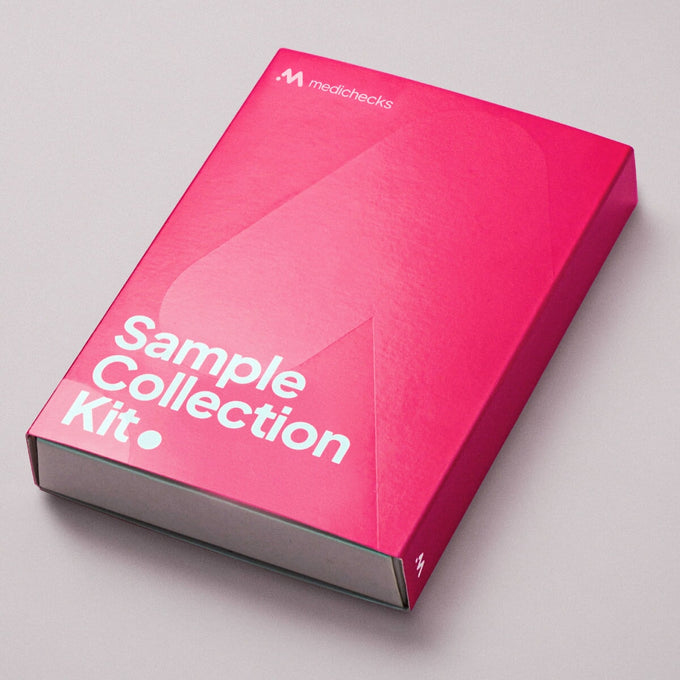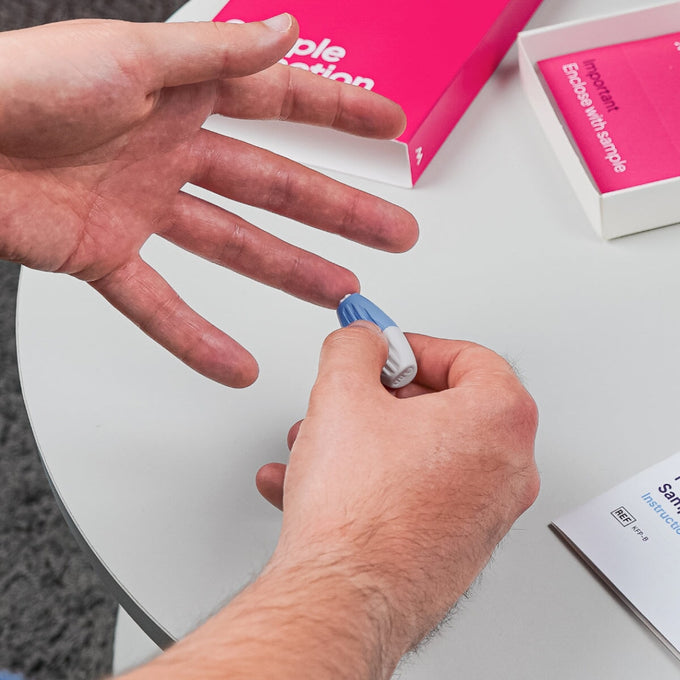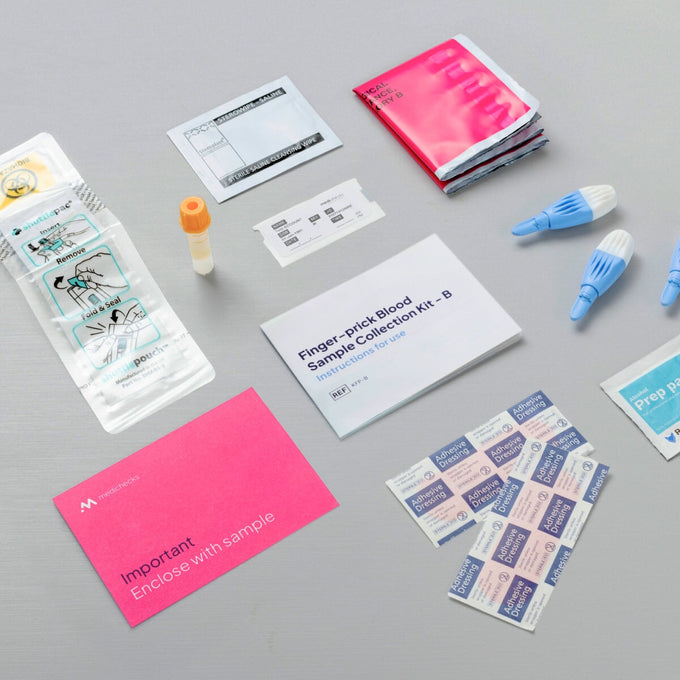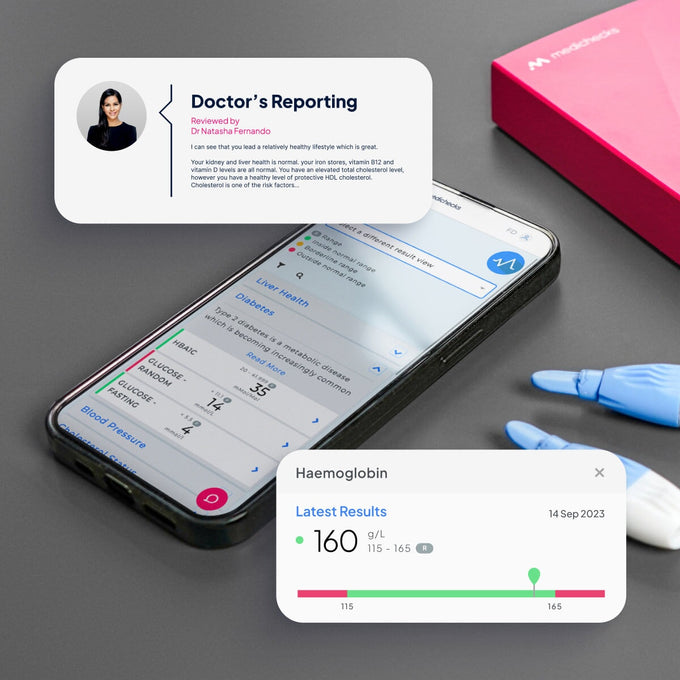Female Hormone Blood Test, from our experts to you.
Dr Sam Rodgers MBBS, MRCGPChief Medical Officer

What are Female Hormones?
Female hormones are essential for a healthy female reproductive system. Other functions of female hormones include fertility, mood, and energy. Oestradiol is the main female sex hormone, which is a type of oestrogen produced in the ovaries. Other essential female hormones include follicle-stimulating hormone (FSH), luteinising hormone (LH) and progesterone. Testosterone is a crucial hormone for women because your body uses it to make estrogen. In women, hormone levels change naturally throughout the monthly menstrual cycle. Levels of oestrogen and progesterone can decrease with age, and women can experience a rise in FSH and LH levels during menopause.
What are the symptoms of a hormonal imbalance?
A hormonal imbalance can lead to unwanted symptoms such as acne, weight gain, mood changes, tiredness, and changes to your menstrual cycle. If your hormone levels are imbalanced for a long time, you could be at higher risk of health problems such as osteoporosis.
Why check my thyroid?
Women are much more likely to experience a thyroid condition compared to men. A thyroid condition can cause similar symptoms to a hormonal imbalance, such as feeling tired or fatigued. This blood test also checks that your thyroid is functioning normally.
What's Included?
How to prepare for your test
Special Instructions
Prepare for your Female Hormone Blood Test by following these instructions. Please take your sample before 10am. Take this test two to five days after the start of your period, ideally on day three. It can be taken any time if you do not have periods. Hormonal contraception can affect the results of this test. Taking a break from this and waiting for your periods to restart before your blood test will give more accurate results. If you use hormone gels, pessaries, patches, or tablets, we strongly recommend selecting a venous sample to minimise contamination sometimes seen with finger-prick tests. Otherwise, administer any hormone supplements using gloves, and make sure your fingers have not been in contact with hormone supplements for at least four weeks before taking the test. Hormones can be absorbed deep within the skin even after minimal contact and remain there for weeks despite vigorous handwashing. Do not take biotin supplements for two days before this test, discuss this with your doctor if it is prescribed.
Hormonal changes in the menstrual cycle
For women who have periods, your female hormone levels control the menstrual cycle. Your cycle length is measured from the day your period starts, to the start of your next period. On average the menstrual cycle lasts for 28 days - but your menstrual cycle can last for anywhere between 21 to 40 days. A blood test can help you to track the hormonal changes which occur during your menstrual cycle.
How your hormone levels change throughout your cycle
Day one is the day your period starts. At this point, your female hormone levels are low. An egg begins to develop in one of your ovaries and gradually produces the hormone oestrogen. Around days 10 – 16, your oestrogen levels are at their highest. A rise in the hormones LH and FSH cause the egg to be released from your ovary. The egg implants itself in your womb and your body begins to produce the hormone progesterone and a smaller amount of oestrogen. By the end of your cycle (around day 28), an unfertilised egg breaks down, and your hormone levels will fall. This hormonal change causes your period to start, and the menstrual cycle to begin again.
Health conditions and female hormones
Polycystic Ovary Syndrome (PCOS) is a condition that stops eggs from developing normally in the ovaries.
Symptoms of PCOS include:
- Excessive hair growth
- Weight gain
- Irregular or missed periods
- High levels of the male hormone testosterone.
Thyroid problems, such as an overactive or underactive thyroid, can also affect the development of eggs in your ovaries and hence affect your hormone levels. Testing your hormone levels can help you to understand whether a health problem, such as PCOS or a thyroid problem, is leading to hormonal changes in your body.
Hormonal changes in the menopause
Menopause causes a change in hormone levels, such as decreased levels of the hormones oestrogen and progesterone. On average, menopause usually occurs between 45 and 55 years of age. Menopause is a natural change which all women will go through, but it can have a big impact on a woman's sense of wellbeing.
Symptoms of menopause include:
- Hot flushes
- Mood changes such as depression and anxiety
- Night sweats
- Tiredness and fatigue
- Changes to your menstrual cycle
- Reduced sex drive
- Problems with memory and concentration
- Vaginal dryness and pain
Hormone replacement therapy (HRT) can reintroduce hormones into your body to treat these symptoms. Most HRT is a combination of oestrogen and progesterone, which you can take by oral tablets, skin patches or gels. If you think you could be transitioning into menopause, a blood test can help identify whether low hormone levels are causing your symptoms. It can also help you to monitor the impact of HRT on your body. You can read more about menopause here and learn about the simple dietary and lifestyle changes that can improve your symptoms.
Female hormones in men
If men have high levels of female hormones, they can experience unwanted symptoms such as reduced sex drive, loss of muscle and increased body fat. It could lead to the growth of breast tissue called gynecomastia. Men are more likely to experience a fall in oestrogen levels in older age, which can occur along with a fall in testosterone levels. Sometimes this can be called 'male menopause', 'manopause', or andropause. Men may be interested to take our specially designed Male Hormone Blood Test.





